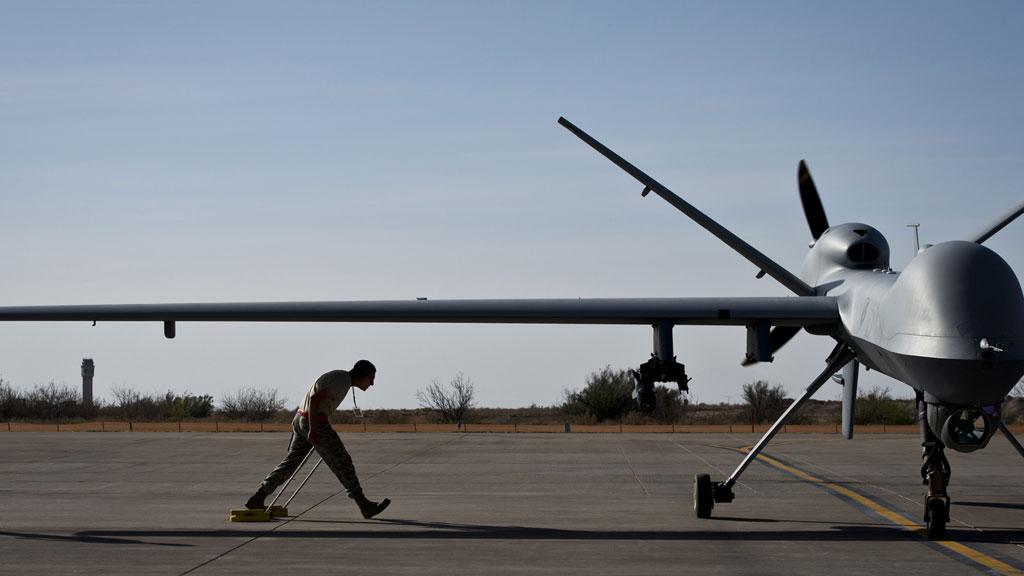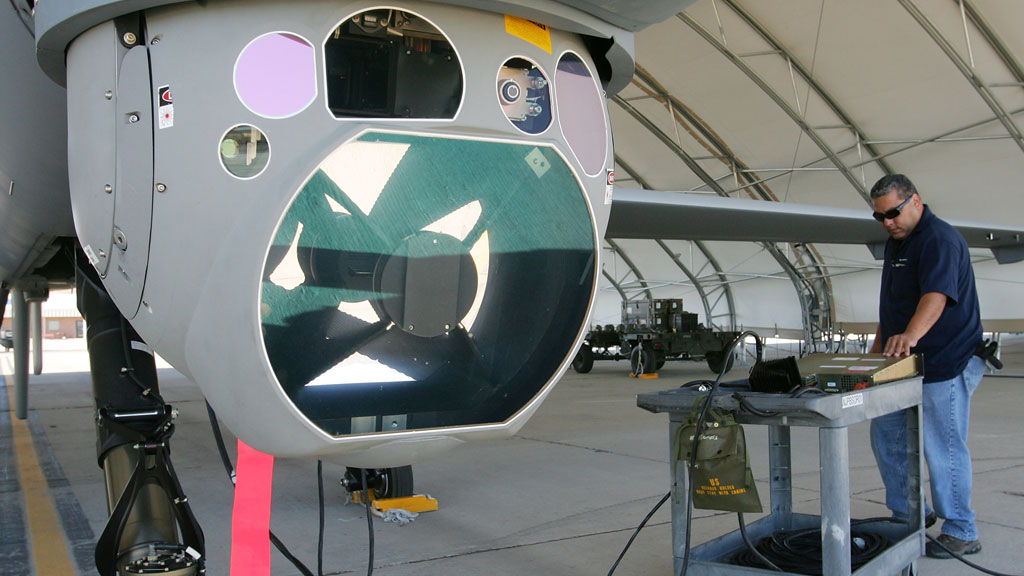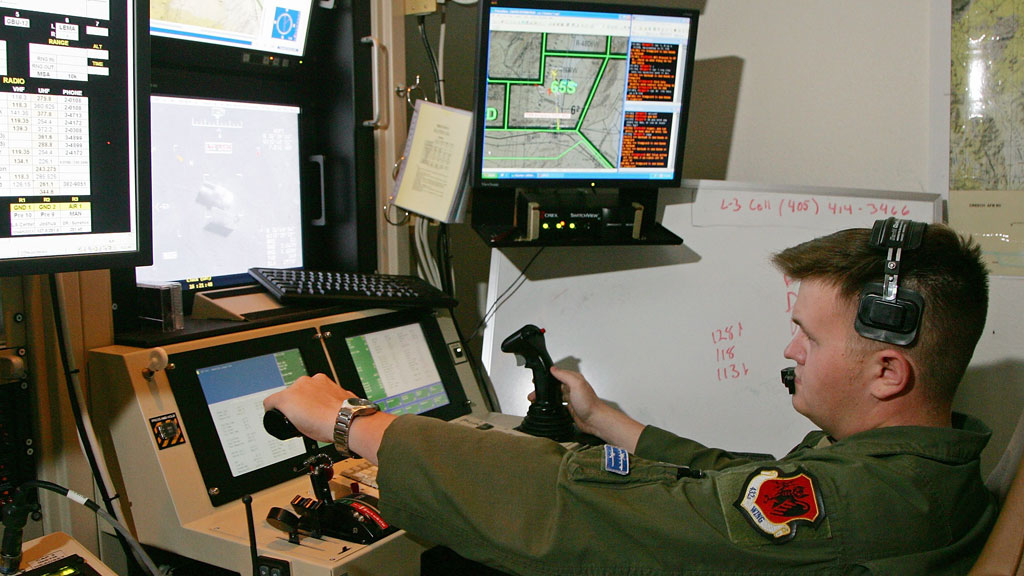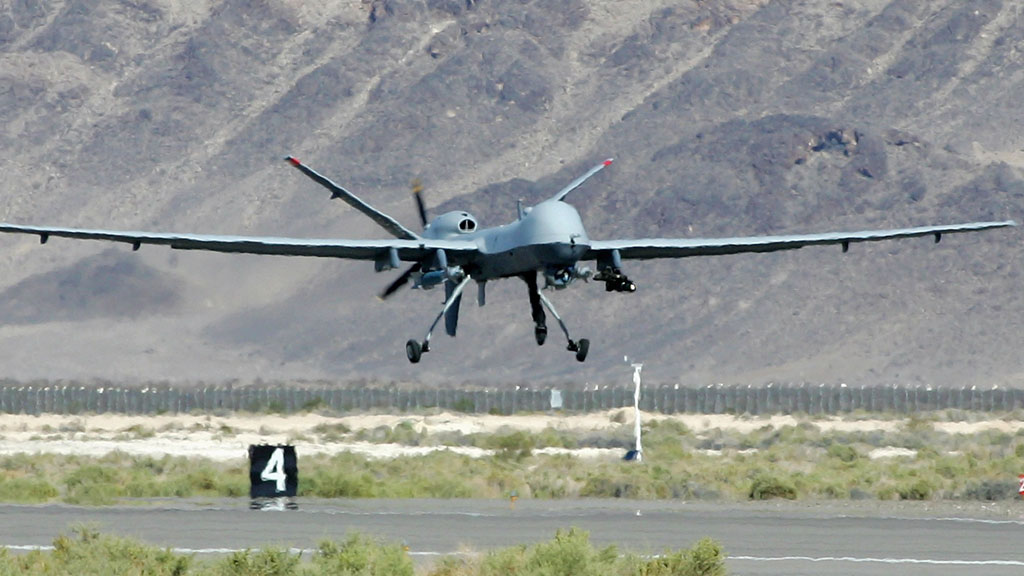What is ABI – and will it make drones even deadlier?
This week Senator John McCain moved to shift control of US drones from the CIA to the defence department. Meanwhile, fears grow about the application of activity-based intelligence to drones.

Barack Obama’s reforms to US spying will seriously limit what data the NSA can hold about Americans, but its vast intelligence operations against terror targets abroad are only likely to grow.
Drones will be central to this expansion by tracking and defining potential targets and combining with an emerging data trend: activity-based intelligence, or ABI, which has been called “the most important intelligence methodology of the first quarter of the 21st century” by one of the most senior heads of US intelligence.
Drones have become the vital tool in drawing “patterns of life” in conflict zones and hostile foreign lands, to help track people and potential terror threats – even when the identities of those individuals are unknown.
Specific individuals are being targeted, even though the United States doesn’t know their identities. Jeremy Scahill
ABI is now essential for sucking meaning from the ever-expanding mass of surveillance and signals intelligence gathered by the US and its allies. The sheer volume of data collected means that more and more work is being done by computers – on the ground, and also carried by the drones themselves.

The MQ-9 Reaper drone is being used in Afghanistan to find potential targets and draw their life patterns using surveillance systems made by US company Exelis – and it may soon be doing a lot more.
Bernard Brower, a development manager at Exelis, told Channel 4 News that unmanned aerial vehicles “are definitely not able to identify people, identify threats”, but may only be a few years away from being able to divine a target’s motives.
“At this point the UAVs are just finding patterns of life,” Mr Brower says. “It’s a hard question of when will they be able to identify a certain pattern as threatening. I think we’re minimum 10 years away from something like that if not more, because the problem becomes more and more complex, it becomes exponentially more difficult to look at intent.”
The intelligence collected by drones and other methods is already a major component of targeted killings by US forces, according to Jeremy Scahill, author of Dirty Wars: The World is a Battlefield, who has carried out extensive research on targeted killings by US forces.
Read more: Why big business and the NSA sift through your data patterns
He paints a frightening picture of impersonal military strikes on unknown individuals, claiming that the CIA and the covert Joint Special Operations Command create basic data profiles of targets without establishing who the people actually are.
Such is the appeal of ABI that it may serve as a catalyst to bring intelligence agencies together
Under programmes run by the CIA and JSOC, individuals were given “numbers and code names”, based on profiles defined by the changing locations of their mobile phone and its SIM card, he said.

“If that handset or that SIM card have been in a particular mosque and then in a certain restaurant, then they’re in a gathering with three other SIM cards that they’re monitoring, those people move up the list, even if their individual identity is not known.”
“In some cases, the specific individuals are being targeted, even though the United States doesn’t know their identities, and may not have any actual evidence that they’re involved in terrorist activity.”
The CIA and JSOC both refused to comment to Channel 4 News on their intelligence methods, but Mr Brower says individuals do not need to be identified when establishing their “patterns of life”.
Drones use wide-area motion surveillance to collect images over large areas, at a low frame rate and at high resolution.”Think of it as Google Earth, only being updated at one or two frames a second,” Mr Brower says.
“With that we’re able to start tracking cars, tracking individuals, and while we don’t actually see the individual or identify the individual or identify the car, we can see the trends that happen in the imagery.”
“We can also derive 3D models from this, so we have an entire city in a model, and therefore we’re able to identify things like certain types of building, how big they are.”

Drones can help determine the “normal” patterns of behaviour across entire cities and send warnings when activity deviates from those patterns, drawing templates for activity around schools which can be applied to similar buildings elsewhere, he says.
Concerns have long been held over the use of drone strikes by the US in areas such as Pakistan, prompting a shift in policy from Barack Obama in July last year when he promised to rein in their use.
But a recent attack in Yemen suggests that little has changed: at least 12 people were killed at a wedding in December during a drone attack, raising doubts about Obama’s commitment to more responsible military action.
ABI is now essential for sucking meaning from the ever expanding mass of surveillance and signals intelligence
Despite the persistent worry over US decision-making, rapid advances in technology will mean ever greater data volumes that people will find even harder to sift through to find patterns – which in turn strengthens the need for ABI.
The principles behind ABI are not new, originating in techniques used to track submarines in the 1970s and 80s, but ABI itself is starting to dominate strategic thinking in America’s myriad intelligence “community” of 17 independent agencies.
What is ABI, and how does it work?
The practice of activity-based intelligence grew out of the need to find patterns in huge amounts of information, gathered in various ways from different sources.
According to Letitia Long, director of the National Geospatial-Intelligence Agency, ABI helps to find "weak signals" of potentially interesting activity in the midst of "big and noisy data" - in everything from social media to the welter of signals picked up from earthquake and ocean sensors.
ABI is key to finding what former US defence secretary Donald Rumsfeld called "unknown unknowns" - that is, unknown targets with unknown behaviours.
ABI uses data on activities collected over a larger area and a prolonged period of time, much like a fingerprint database: building up what currently seems like irrelevant data for when it may be needed in the future, for solving a case that no one has thought of yet. In operations,ABI could be used to collect the licence plates of all cars in a certain area for searching at a later date.
Advances in technology mean that future data collection sensors will be able to "tip off" one another automatically when activity of interest occurs, helping to record vital information with less human intervention. Automated metadata tagging - describing what the data refers to - will also make correlation much faster.
Such is the appeal of ABI that it may serve as a catalyst to bring agencies together and standardise their working methods – making them ever more capable of spotting trends even as Obama tries to rein in their data activities.
ABI is in the same family of intelligence analysis as Raytheon’s controversial RIOT research programme, which can mine social media like Facebook and Twitter to track people’s movements and predict what they will do next.

RIOT has not disappeared – it has simply been renamed Intersect Connect – and its technology was reportedly shared with the US government in 2010 as part of a joint research project. Its potency as an intelligence tool may only grow as younger people appear to become less concerned about the eventual uses of the information they put online.
Read more: March of the machines - is the future of warfare robotic?
The US appetite for the treasures that ABI can unearth has not diminished, despite the widespread trauma caused by Edward Snowden‘s intelligence leaks. If anything, the hunger is growing.
Letitia Long is director of the powerful National Geospatial-Intelligence Agency, which spans intelligence and military operations. She said at the end of 2013 that ABI has become “the most important intelligence methodology of the first quarter of the 21st century”.
She went further, calling ABI “as basic and as important as photographic interpretation and imagery analysis became during world war II”.
As Mr Brower says, computers and drone sensors will only get “faster, better, cheaper and smaller”. Which means more data, more computer processing – and a lot more ABI.
-
Latest news
-
‘Russian aggressions have never pushed Georgia to deviate from its own path’, says Georgian President5m

-
Why is Georgia’s ruling party so intent on adopting ‘foreign influence’ bill?5m

-
Trump’s lawyers try to paint Michael Cohen as liar out for revenge at trial3m

-
England’s schools told not teach gender identity2m

-
Slovakia PM shooting: Suspect charged with attempted murder3m

-




